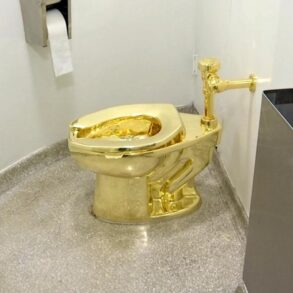The statue of Confederate Gen. Robert E. Lee that was once at the center of the deadly 2017 White nationalist “Unite the Right” rally in Charlottesville, Virginia, has been melted down.
The statue was rendered into bronze ore Saturday at a foundry in an undisclosed location, according to University of Virginia professor Jalane Schmidt.
Schmidt co-leads “Swords into Plowshares,” a project dedicated to transforming the controversial Lee statue into public art.
She told CNN the group has chosen to withhold the name and location of the foundry to protect the site and its employees from threats and intimidation.
“It was a matter of responsibility, both to our community and to any other community,” she said of the organization’s decision to melt the statue. “We didn’t want to send it down the road to another community to like, send our toxic waste down the road.”
Photo Galleries
PHOTOS: Robert E. Lee statue removed in Charlottesville
The monument to Lee stood in a park once named after the confederate general for nearly 100 years. But in 2017, amid a nationwide call to tear down confederate monuments, the city council voted to remove the statue.
That decision sparked an uproar among neo-Confederate, White nationalist and neo-Nazi sympathizers who violently clashed with counter-protesters during the “Unite the Right” protest in Charlottesville that August.
Heather Heyer, a counter-protester, was killed when James Alex Fields drove his car into a crowd. Fields was later found guilty in connection with Heyer’s death and sentenced to two life terms in prison.
In the aftermath of the “Unite the Right” rally, Schmidt said the Charlottesville community has tried to heal. “Swords Into Plowshares” was created by the Jefferson School African American Heritage Center, to spearhead the effort to repurpose the controversial monument.
In December 2021, the Charlottesville City Council voted to hand over the statue to the Center, which is housed in what was once Charlottesville’s only high school for Black students.
This July, after a protracted legal battle over the future of the 26-foot effigy, a judge ruled the statue could be melted down and repurposed.
But Schmidt said actually watching the statue melt was a solemn moment.
“It was not this gleeful ceremony and I know some of our detractors might think that it was,” she said. “It was very solemn, very serious.”
The statue was cut into pieces before being melted in a furnace that reached temperatures of more than 2,000 degrees Fahrenheit, Schmidt said.
It took hours to render the monument into hundreds of blocks of bronze which will now be made into new art, she added.
While other Confederate statues across the South have been removed and placed in storage or museums, Schmidt said she felt melting the Lee statue was the best decision for the Charlottesville community.
“Lawsuits, the intimidation, the threats, the violence … we’ve struggled,” she said. “And so now what it feels like it’s a relief … it feels like now we can move forward because we were fighting, fighting, fighting, just to get here.”
It is “gratifying to finally be going forward now with creativity and really focusing on the art and not the hate,” she added.
In a statement Thursday, Andrea Douglas, executive director of the Jefferson School African American Heritage Center, said the end of the Lee statue marks “the beginning of a beautiful new work of art for the community.”
The Center will now take proposals from artists for how to repurpose the ore into something new.
Douglas said officials hope to announce a finalist for the art installment by 2024 – the 100th anniversary of the unveiling of the Lee statue – and have the new project installed by 2027, the 10th anniversary of the Unite the Right rally.
“Our efforts have not been to remove history but bear witness to truths about our racist past and our aspirations for a more equitable future,” she said in the statement.
This post was originally published on this site be sure to check out more of their content.






